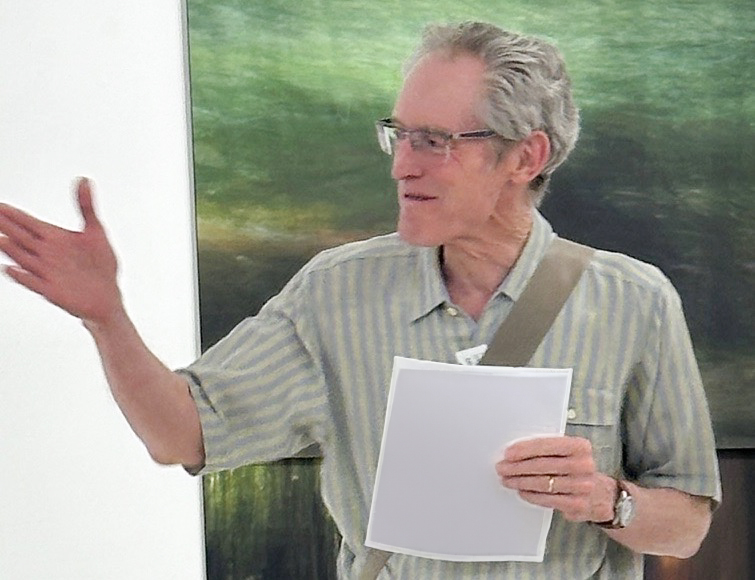
Ashes, 2023, oil and collage on canvas, 63″ x 112″
September 10 – October 19, 2024
Opening reception: Tuesday, September 10, 5:00 – 6:30 p.m.
Artist’s Gallery Talk: 5:30 p.m.
Working with materials, thinking with materials, sensing their potential as you interact with them—constructing and deconstructing—to make an object with a physical presence that can provide a locus for emotional, intuitive responses that can engage the viewer in a deep, interior way. This is the process and the potential of painting. The physical becoming meta-physical. Intimations of infinity.
I love this quote from President Kennedy engraved in the wall at the Kennedy Center, Washington, DC: “The life of the arts . . . . is close to the center of a nation’s purpose—and is a test of the quality of a nation’s civilization.” It gives me hope and support as an artist in our contemporary world, a world in need of authenticity and beauty which art can provide.

About the Artist
About half of Robert Stuart’s time growing up was spent overseas in Africa, Asia, and the Pacific while his father worked for USAID and UNESCO. Stuart was encouraged in art by his mother who attended The Art Students League, and taught art, and also by a longtime family friend, Catalan artist Pierre Daura, who had been a member of “Cercle et Carré,” (Circle and Square), the avant-garde group in Paris that included artists such as Mondrian, Arp, and Kandinsky. Four years at Boston University’s School for the Arts was a rigorous, traditional program with much figure drawing, and where Philip Guston was a major influence.
Following an MFA at James Madison University Stuart launched a career as a painter of landscapes and still-lifes, confident painting “before the motif,” and found success in galleries. An art historian friend once said that he was “an abstract painter who went outside.” Being selected for two exhibits at the Virginia Museum of Fine Arts were important early boosts for Stuart’s career.
After ten years exhibiting in prominent galleries with his unique representational style, but with episodes of experimenting with abstraction, his responses to abstract paintings became so strong and his need for it so compelling that he could no longer deny it. Discovering the painter Agnes Martin’s paintings and writings was crucial. Finally, immediately after visiting Zen gardens in Japan, a vivid dream of a large, red, abstract painting was so potent that Stuart had to make the painting, and set out newly committed to pure abstraction. Almost immediately, there were two major validations for the artist: he was selected for the New Orleans Museum of Art Triennial, and not long after, Stuart received an “Academy Award in Art” from the American Academy of Arts and Letters.
Stuart’s home and studio are in Staunton, Virginia. He is represented by Reynolds Gallery in Richmond, Virginia.
